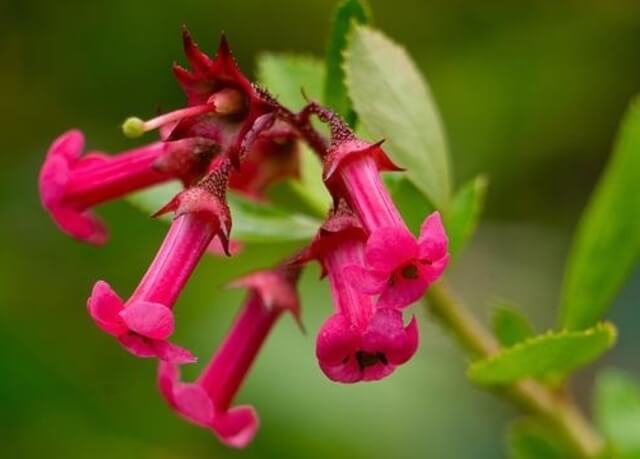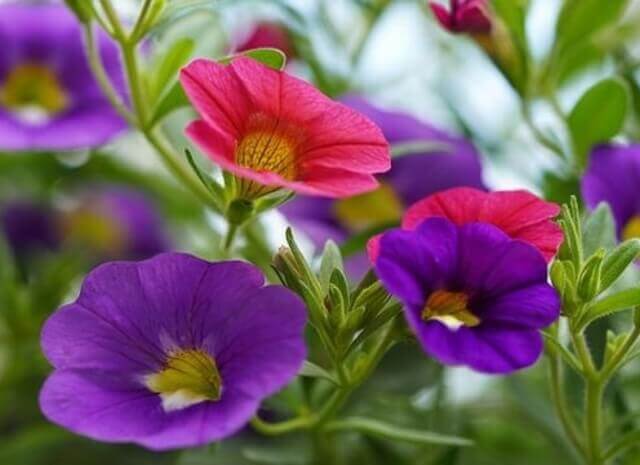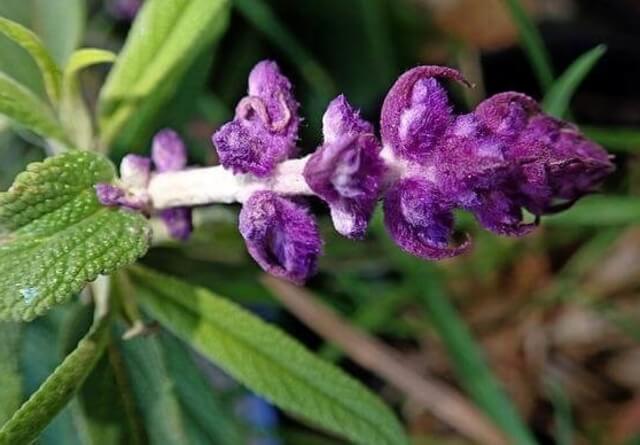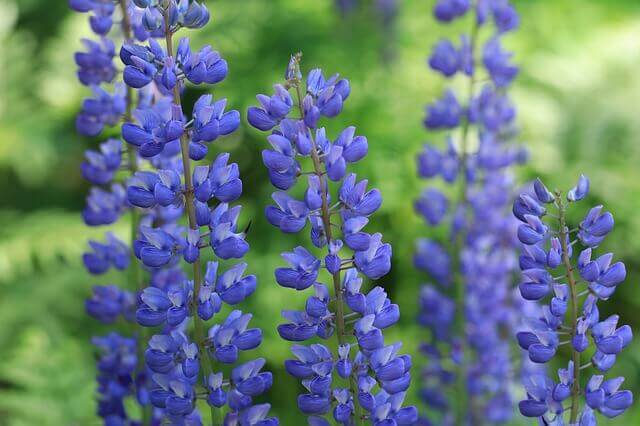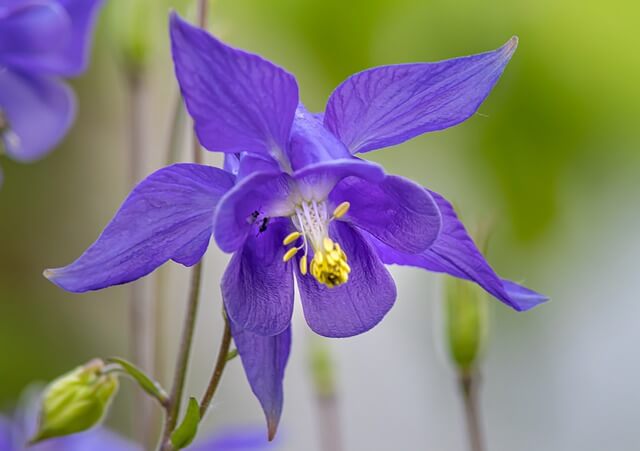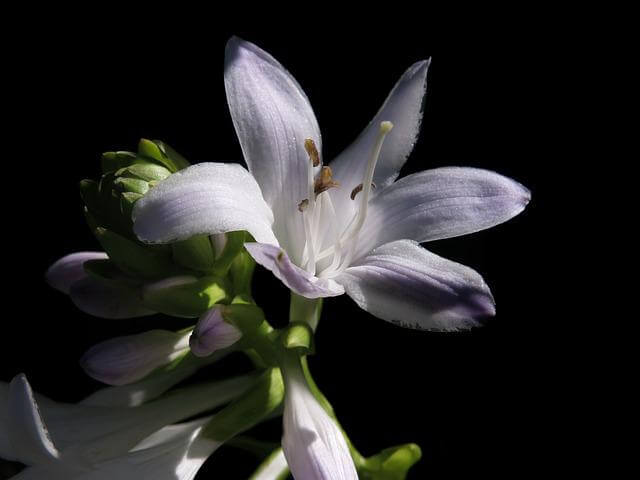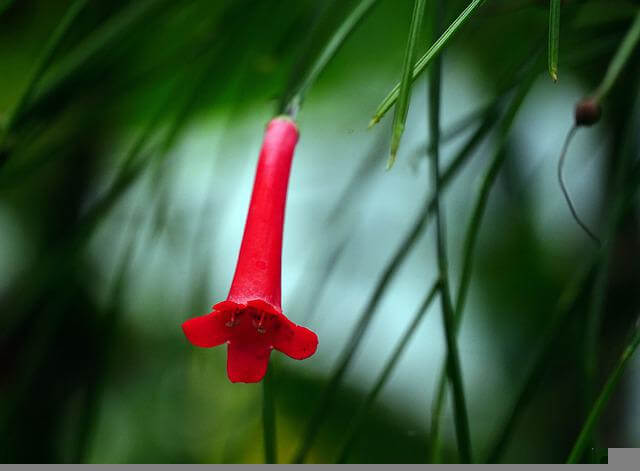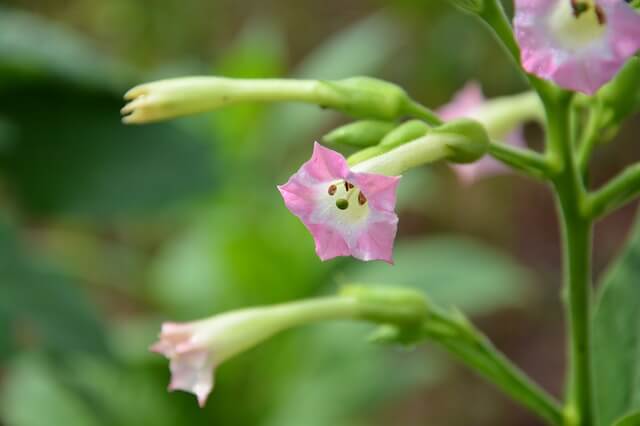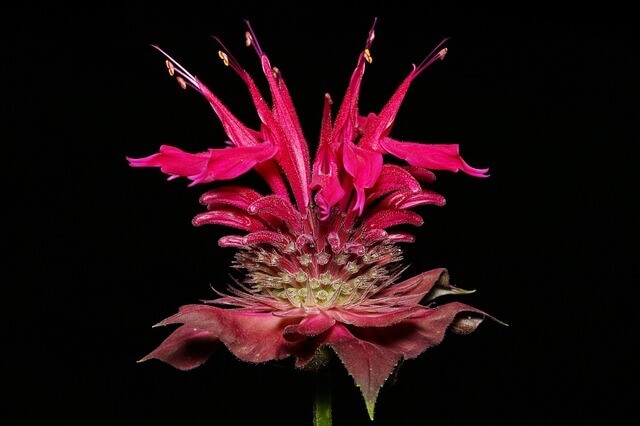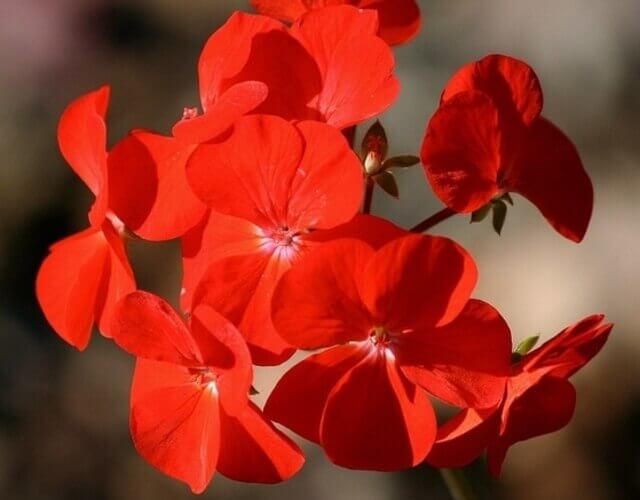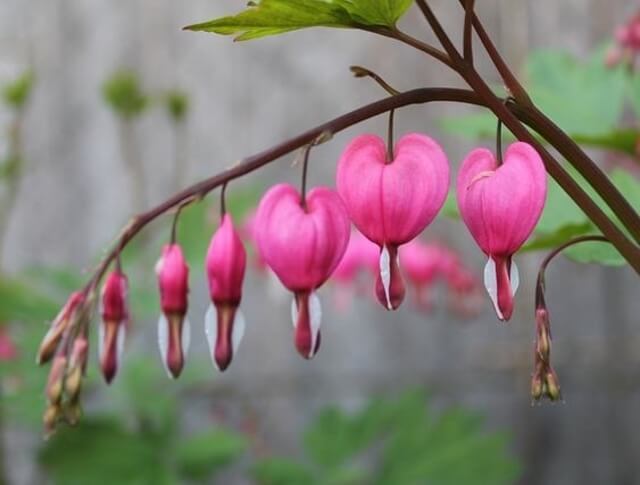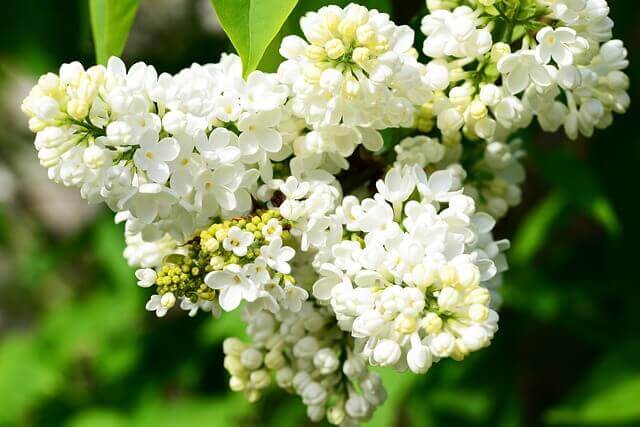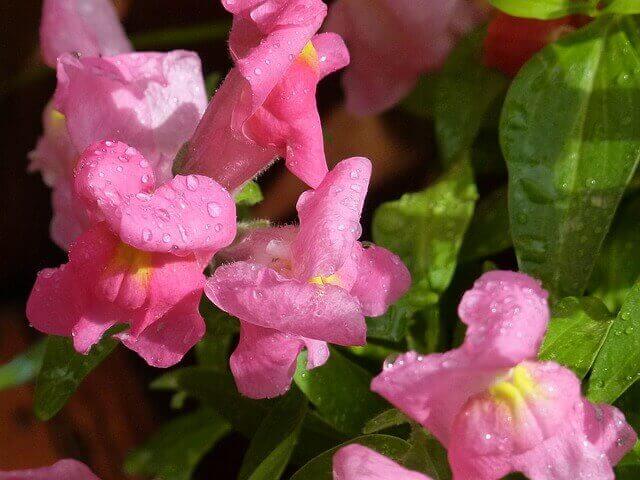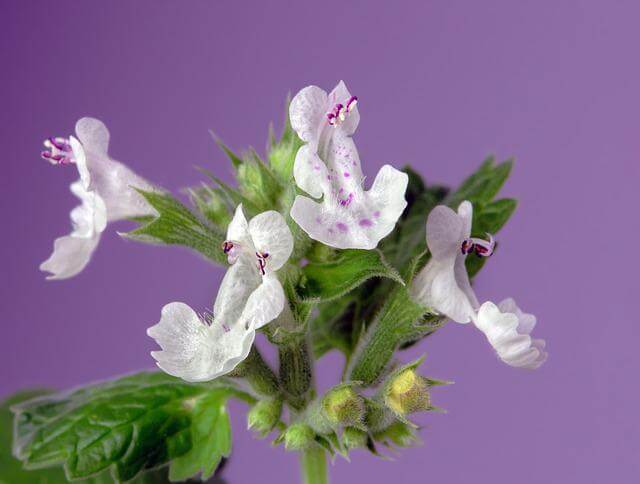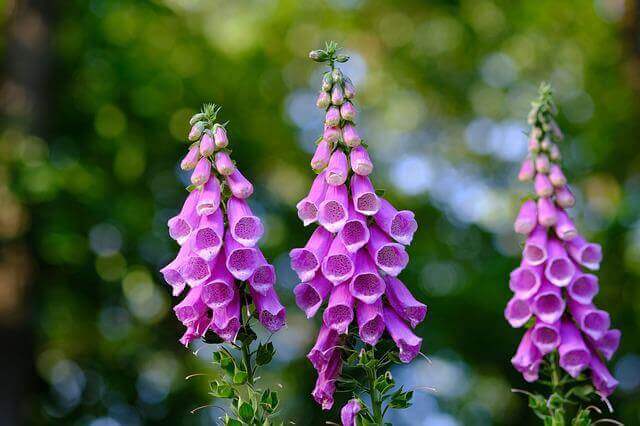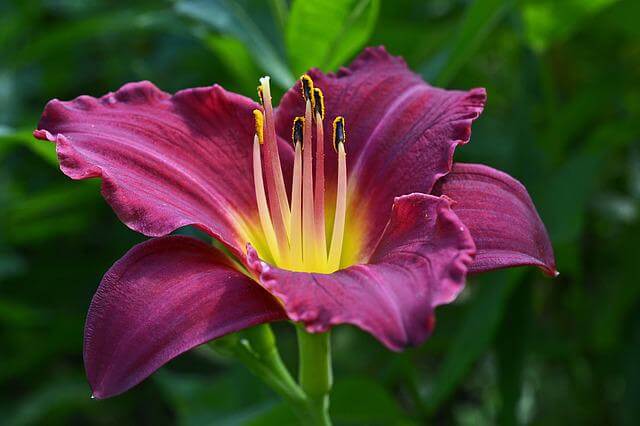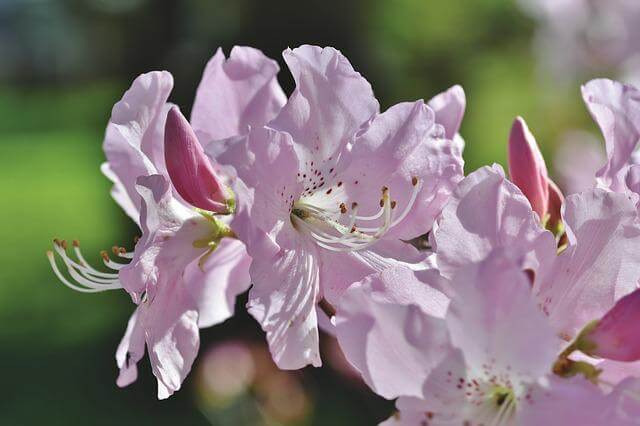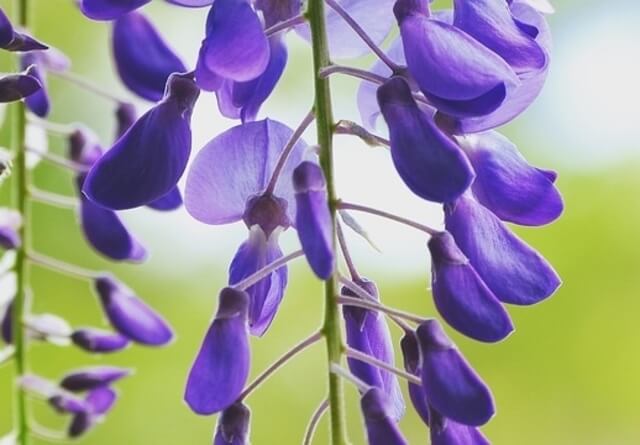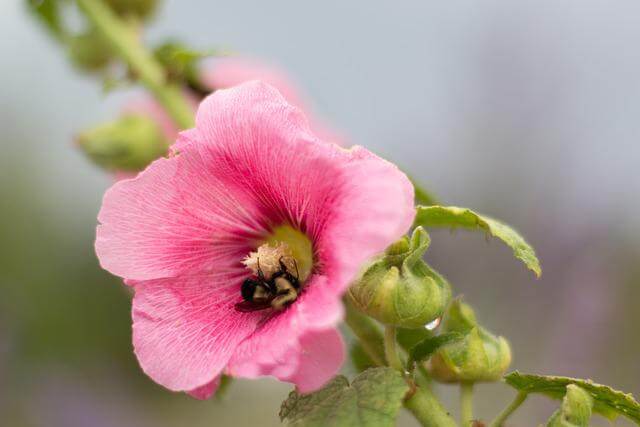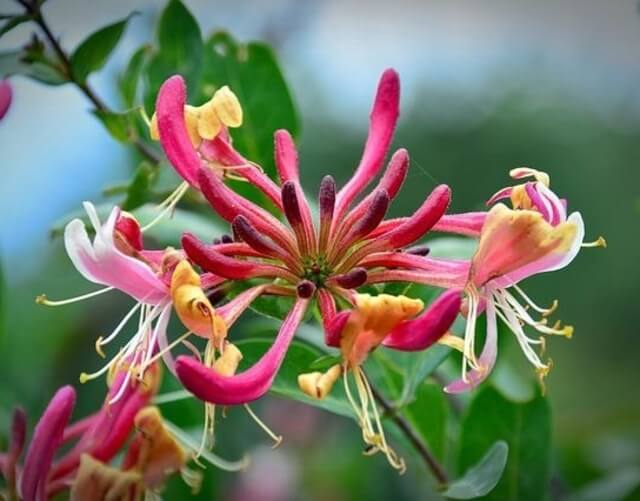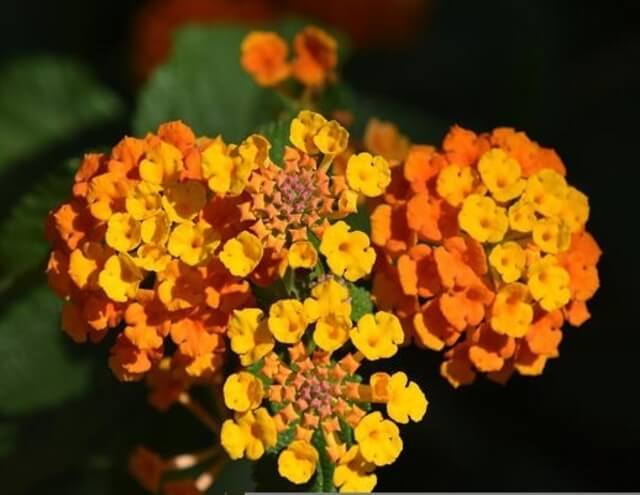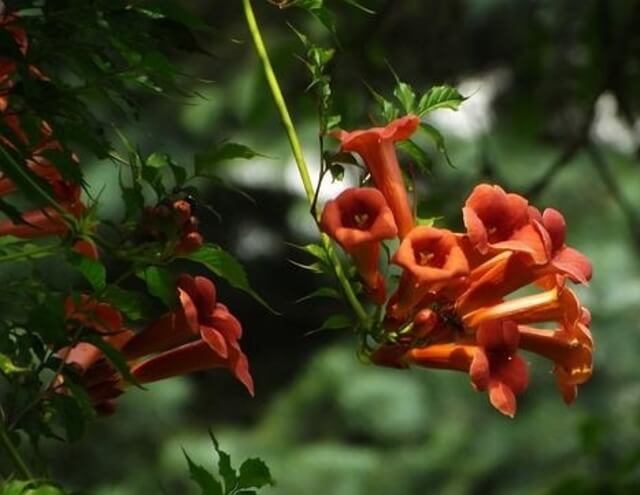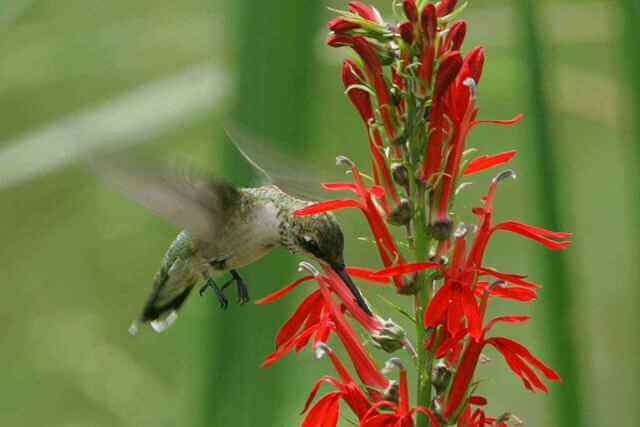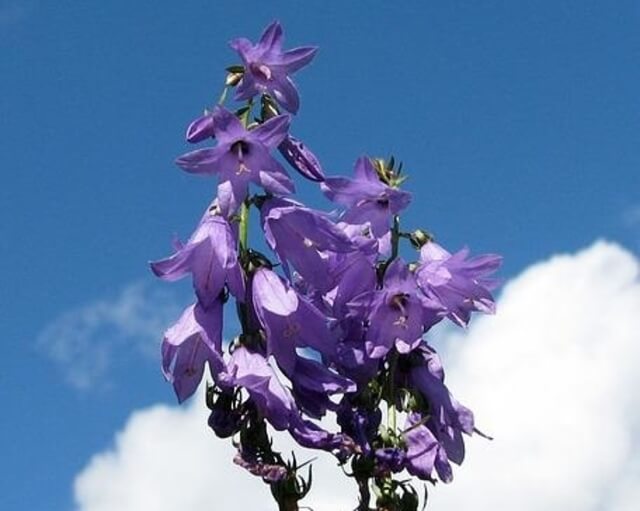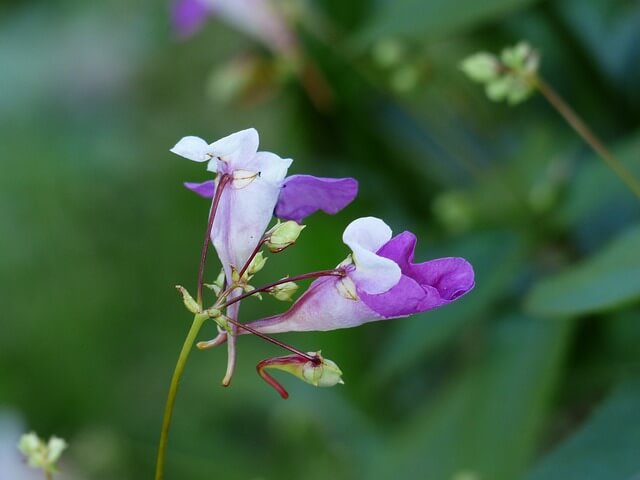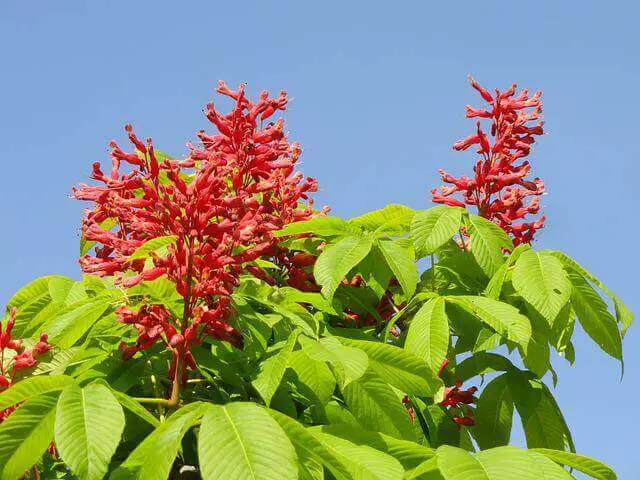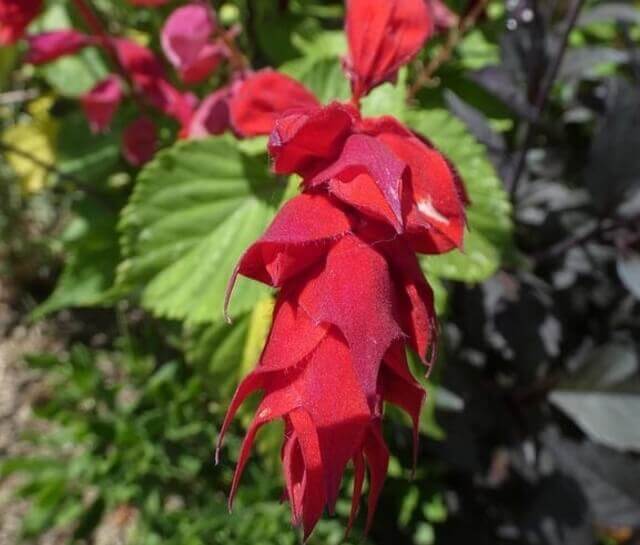Explore 31 flowers that possess the unique charm of attracting hummingbirds. Enhance your garden with a burst of vibrant colors and these captivating plants. It’s worth mentioning that while these flowers entice hummingbirds, some can be toxic to pets, so exercising caution is crucial.
By incorporating these enchanting blooms, you not only embrace their beauty but also create an opportunity to witness the wonder of hummingbirds up close, adding a touch of magic to your outdoor sanctuary.
Table of Contents
- 1 Why Attract Hummingbirds To Your Garden?
- 2 How To Attract Hummingbirds?
- 3 Understanding Hummingbirds
- 4 Types of Flowers That Attract Hummingbirds
- 4.1 Beardtongue Flower (Penstemon)
- 4.2 Morning Glory (Ipomoea)
- 4.3 Petunia (Petunia)
- 4.4 Salvia (Salvia)
- 4.5 Lupine (Lupinus)
- 4.6 Columbine (Aquilegia)
- 4.7 Hosta (Hosta)
- 4.8 Cigar Plant (Cuphea Ignea)
- 4.9 Flowering Tobacco (Nicotiana Alata)
- 4.10 Bee Balm (Monarda)
- 4.11 Zinnia (Zinnia Violacea)
- 4.12 Annual Geranium (Pelargonium)
- 4.13 Bleeding Heart (Lamprocapnos Spectabilis)
- 4.14 Lilac (Syringa Vulgaris)
- 4.15 Fuschia (Fuchsia)
- 4.16 Snapdragon (Antirrhinum Majus)
- 4.17 Begonia (Begonia)
- 4.18 Catmint (Nepeta)
- 4.19 Common Foxglove (Digitalis Purpurea)
- 4.20 Daylily (Hemerocallis)
- 4.21 Rhododendron (Rhododendron)
- 4.22 Wisteria (Wisteria)
- 4.23 Hollyhocks (Alcea Rosea)
- 4.24 Honeysuckle (Lonicera)
- 4.25 Lantana (Lantana Camara)
- 4.26 Trumpet Vine (Campsis Radicans)
- 4.27 Cardinal Flower (Lobelia Cardinalis)
- 4.28 Great Blue Lobelia (Lobelia Siphilitica)
- 4.29 Jewelweed (Impatiens Capensis)
- 4.30 Red Buckeye (Aesculus Pavia)
- 4.31 Scarlet Sage (Salvia Splendens)
- 5 Creating a Hummingbird Garden Design:
- 6 Cautions and Safety
- 7 Frequently Asked Questions
- 7.1 What is the hummingbird’s favorite flower?
- 7.2 What is a hummingbird’s favorite color flower?
- 7.3 Do hummingbirds prefer flowers or feeders?
- 7.4 What smell attracts hummingbirds?
- 7.5 Do hummingbirds like hydrangeas?
- 7.6 Do red geraniums attract hummingbirds?
- 7.7 Do hostas attract hummingbirds?
- 7.8 Do hummingbirds like petunias?
- 7.9 What flowers do hummingbirds not like?
- 8 Author
Why Attract Hummingbirds To Your Garden?
Attracting hummingbirds to your garden offers numerous benefits, both for the environment and for the enjoyment of your outdoor space. Here are some key reasons to welcome these delightful avian visitors:
- Pollination Powerhouses: Hummingbirds are excellent pollinators. Their long, slender beaks are perfectly adapted for sipping nectar from flowers, and in the process, they transfer pollen from one bloom to another. This pollination promotes the reproduction of many plant species, including some of the beautiful flowers in your garden. This helps maintain biodiversity and supports the production of fruits, vegetables, and seeds.
- Garden Elegance: The sight of hummingbirds hovering and feeding on nectar is a mesmerizing and captivating spectacle. These small birds add a touch of elegance and magic to any garden, making it a more inviting and vibrant space. Observing their aerial acrobatics can be a source of endless joy for garden enthusiasts and birdwatchers.
- Natural Pest Control: Hummingbirds are not just nectar feeders; they also consume insects and spiders. By inviting these tiny insectivores into your garden, you’re essentially employing natural pest controllers. They help keep the insect population in check, reducing the need for chemical pesticides.
- Educational Opportunities: Attracting hummingbirds provides valuable educational opportunities, especially for children. Observing these birds up close can teach kids about the wonders of nature, the importance of conservation, and the interconnectedness of all living things. It’s an engaging way to instill a love for wildlife and a sense of environmental responsibility.
- Native Plant Promotion: To attract hummingbirds, you’ll need to cultivate flowers that are native to your region. This promotes the growth of native plant species, which in turn supports local ecosystems and wildlife. It’s a step towards preserving the balance of your local environment.
- Mood-Boosting Aesthetic: The vibrant colors of hummingbird-attracting flowers and the frequent visits of these birds can have a positive impact on your mood. A garden filled with life and color provides a sense of tranquility and happiness.
- Research and Conservation: By creating a hummingbird-friendly habitat, you contribute to the study and conservation of these remarkable creatures. Many organizations and researchers rely on citizen scientists to report their hummingbird sightings, helping monitor population trends and migration patterns.
How To Attract Hummingbirds?
Attracting hummingbirds to your garden can be an incredibly rewarding experience. To entice these enchanting birds, consider the following methods and tips:
- Choose Hummingbird-Friendly Flowers: Select a variety of nectar-rich, tubular flowers in vibrant colors like red, orange, and pink. Some top choices include trumpet vine, salvia, bee balm, and petunias. It’s essential to have a mix of plants that bloom at different times to provide a consistent nectar source throughout the season.
- Plant Native Species: Hummingbirds are often attracted to native plants, as they have coevolved with local bird species. Research the native plants in your area and incorporate them into your garden.
- Create a Garden Habitat: Besides flowers, include other elements that attract hummingbirds. Provide perches like small branches or trellises for the birds to rest on between feedings. Hummingbirds are also drawn to water features, so consider adding a birdbath or a small fountain.
- Hang Hummingbird Feeders: Hummingbird feeders are an excellent way to supplement their diet, especially when flowers are not in bloom. Use feeders with bright red accents, as these colors are known to attract hummingbirds. Fill them with a homemade nectar solution made from one part sugar to four parts water (no need for food coloring). Keep feeders clean and change the nectar every few days to prevent spoilage.
- Provide Adequate Sunlight: Most hummingbird-attracting plants thrive in full sun. Ensure your garden receives the necessary sunlight for these flowers to flourish.
- Avoid Pesticides: Minimize or eliminate the use of pesticides and herbicides in your garden, as these can harm hummingbirds and their food sources. Opt for natural pest control methods to maintain a balanced ecosystem.
- Maintain a Chemical-Free Garden: Hummingbirds are sensitive to chemicals, so opt for organic gardening practices. This not only benefits these tiny visitors but also promotes a healthier environment overall.
- Regular Pruning: Regularly prune and deadhead your flowering plants to encourage more blooms. Pruning helps maintain a neat and vibrant garden while ensuring a constant supply of nectar.
- Year-Round Planting: Consider planting evergreen shrubs or trees with winter berries to provide year-round food sources for overwintering hummingbirds in milder climates.
- Hummingbird Perches: In addition to feeders, offer hummingbird-friendly perches. These birds can be territorial, and providing various spots for them to rest and observe their surroundings can reduce conflicts.
- Maintenance and Monitoring: Regularly inspect your garden and feeders. Clean feeders thoroughly to prevent mold and disease. Keep an eye out for any signs of hummingbird activity and document your sightings as part of citizen science efforts.
- Educate and Share: Educate your friends and neighbors about the joys of hummingbird gardening. Sharing your knowledge can lead to more bird-friendly gardens in your community.
- Be Patient: Attracting hummingbirds may take time. Be patient and persistent, and eventually, your garden will become a haven for these mesmerizing birds.
By incorporating these methods and creating an ideal hummingbird habitat, you’ll not only attract these incredible birds but also make your garden a more vibrant and ecologically friendly space.
Understanding Hummingbirds
Understanding hummingbirds is essential to creating a garden that caters to their unique needs. These tiny creatures exhibit fascinating behavior, have intriguing migration patterns, and distinct feeding habits:
Behavior:
- Territorial Nature: Hummingbirds can be highly territorial, defending their food sources from other hummingbirds and sometimes even other bird species.
- High Metabolism: To sustain their incredible energy levels, hummingbirds need to feed multiple times per hour, making them frequent visitors to your garden.
- Acrobatics: Hummingbirds are agile fliers, capable of hovering, flying backward, and even upside-down. Their aerial acrobatics are a sight to behold.
Migration Patterns:
- Incredible Migrations: Hummingbirds are known for their remarkable migrations. Some species travel thousands of miles between their breeding and wintering grounds. For instance, the Ruby-throated Hummingbird crosses the Gulf of Mexico, a journey of over 500 miles.
- Triggered by Day Length: The timing of hummingbird migrations is often linked to day length, with decreasing daylight triggering the instinct to migrate.
- Species Variation: Different hummingbird species have distinct migration routes and wintering areas. Understanding the patterns of the species in your region can help you prepare for their arrival.
Feeding Habits:
- Nectar Consumption: Nectar is the primary source of energy for hummingbirds. They lap it up with their specialized, grooved tongues.
- Supplemental Diet: While nectar provides essential sugars, hummingbirds also consume insects and spiders for protein. Their diet includes tiny arthropods found on flowers and leaves.
- Metabolism and Energy: Hummingbirds have the highest metabolism of any bird species, requiring an enormous amount of food each day to fuel their energy demands.
- Frequency of Feeding: To maintain their energy levels, hummingbirds visit hundreds of flowers each day, often returning to the same patches at regular intervals.
Understanding these aspects of hummingbird behavior, migration, and feeding habits is crucial to creating a garden that not only attracts them but also provides the necessary resources for their survival. When you appreciate the incredible journey and daily challenges these birds face, you’ll find even more joy in witnessing their visits to your garden.
Types of Flowers That Attract Hummingbirds
Beardtongue Flower (Penstemon)
Why Hummingbirds Love It:
Beardtongue (Penstemon) is a hummingbird favorite due to its tubular-shaped flowers, rich in nectar. These plants come in various colors, including purple, pink, or white, making them visually appealing to hummingbirds. The bright, showy blossoms and the abundance of nectar are like a hummingbird’s paradise.
Growing and Caring for Beardtongue (Penstemon):
| Aspect | Information |
|---|---|
| Planting | Best in full sun but can tolerate light shade; thrives in most soil types. |
| Watering | Maintain moderate moisture levels, avoid waterlogging. |
| Toxicity | Non-toxic to humans, but ingestion may cause mild gastrointestinal upset in pets. |
| Height | Typically grows between 12″ to 36″ inches tall. |
| Blooming | Blooms in various vibrant colors, attracting hummingbirds. |
Beardtongue (Penstemon) is a wonderful addition to any garden, attracting hummingbirds with its colorful blooms. It’s not toxic to humans but may cause mild issues if ingested by pets, so be cautious if you have furry friends.
Morning Glory (Ipomoea)
Why Hummingbirds Love It:
Morning Glory’s (Ipomoea) enchanting trumpet-shaped blooms in a variety of hues, coupled with their sweet nectar, act as a magnet for hummingbirds. The morning hours are when these flowers predominantly open, aligning with the hummingbirds’ feeding patterns, making Morning Glory an alluring choice for these agile avian visitors.
Growing and Caring for Morning Glory (Ipomoea):
| Aspect | Information |
|---|---|
| Planting | Grow from seeds in well-draining soil and ensure at least six hours of sunlight. |
| Watering | Maintain consistent moisture levels, but avoid overwatering. |
| Toxicity | Be cautious if you have pets; Morning Glory can be toxic to dogs and cats. |
| Flowering | Typically blooms in the morning but may also flower later in the day. |
| Support | Provide trellises or supports for the vines to climb and sprawl. |
With its vibrant blossoms and favorable position for hummingbirds, Morning Glory can be a delightful addition to your garden.
Petunia (Petunia)
Why Hummingbirds Love It:
Hummingbirds are naturally drawn to red and purple flowers, making Petunias (Petunia) an excellent choice for attracting these avian acrobats. The rich, colorful blossoms of Petunias not only catch their attention but also provide a generous source of nectar.
Growing and Caring for Petunia (Petunia):
| Aspect | Information |
|---|---|
| Planting | Plant in clusters near feeders to ensure visibility to hummingbirds. |
| Sunlight | Require full sun for optimal growth and blooming. |
| Watering | Keep the soil consistently moist but avoid waterlogging. |
| Maintenance | Deadhead spent flowers to encourage continuous blooming. |
| Toxicity | Some varieties may be toxic to pets, so take precautions. |
Petunias are not only a visual delight in your garden but also an auditory one when hummingbirds come visiting. Their bright colors and nectar-filled flowers make them a hummingbird-friendly choice for your outdoor space.
Salvia (Salvia)
Why Hummingbirds Love It:
Salvia plants, with their tubular and vividly colored flowers in various shades including red, orange, pink, and purple, hold a special allure for hummingbirds. These nectar-rich blossoms are a hummingbird’s delight, drawing them to your garden with their irresistible, sugary sustenance.
Growing and Caring for Salvia (Salvia):
| Aspect | Information |
|---|---|
| Varieties | Multiple salvia varieties exist, each with its own growth conditions. |
| Sunlight | Most salvias thrive in full sun but check specific variety requirements. |
| Soil | Well-drained soil is essential; adapt to the type preferred by your salvia. |
| Watering | Water regularly but avoid over-saturation to prevent root rot. |
| Toxicity | Be cautious as some salvias can be toxic to pets if ingested. |
| Blooming | Salvia typically blooms throughout the summer, attracting hummingbirds. |
Salvia’s vibrant colors and tubular flowers make it an excellent choice to entice hummingbirds to your garden, ensuring a delightful spectacle throughout the summer.
Lupine (Lupinus)
Why Hummingbirds Love It:
Lupine (Lupinus) boasts vibrant, colorful flowers in shades of purple, blue, pink, or white, arranged on tall spikes. These striking blooms are rich in nectar, making them a beacon for hummingbirds. These birds are drawn to the abundant nectar reservoirs within Lupine’s distinctive flowers.
Growing and Caring for Lupine (Lupinus):
| Aspect | Information |
|---|---|
| Planting | Opt for well-drained, sunny areas to accommodate these perennials. |
| Watering | Maintain adequate soil moisture without over-saturation. |
| Toxicity | Be cautious, as Lupine can be toxic to pets if ingested. |
| Growth Height | Lupine plants can reach up to 2 feet in height. |
| Blooming | Abundant blooms in various colors during the flowering season. |
Lupine’s captivating colors and nectar-filled flowers create a hummingbird haven in your garden. By providing well-drained soil and proper care, you can successfully cultivate these attractive perennials.
Columbine (Aquilegia)
Why Hummingbirds Love It:
Hummingbirds are irresistibly drawn to Columbine (Aquilegia) flowers due to their unique shape, which accommodates the hummingbird’s long beak, and the copious amount of sweet nectar they produce. The vibrant and plentiful nectar in Columbine flowers makes them a hummingbird favorite.
Growing and Caring for Columbine (Aquilegia):
| Aspect | Information |
|---|---|
| Planting | Grow in well-draining soil, and Columbine thrives in both partial shade and sun. |
| Watering | Maintain moderate moisture levels without overwatering. |
| Toxicity | While a hummingbird favorite, be cautious, as Columbine is toxic to humans if ingested. |
| Nectar Output | Abundant nectar production attracts hummingbirds and other pollinators. |
Columbine’s captivating blooms and hummingbird-friendly nectar output can elevate your garden, but be aware of its toxicity to humans if ingested.
Hosta (Hosta)
Why Hummingbirds Love It:
Hosta (Hosta) plants with their unique foliage and spikes of flowers in shades of white, blue, lavender, and pink attract hummingbirds thanks to their nectar-rich blooms. These birds are drawn to the sweet nectar and may even perch on the leaves while sipping from the flowers.
Growing and Caring for Hosta (Hosta):
| Aspect | Information |
|---|---|
| Planting | Grow in well-drained soil with partial shade to full shade conditions. |
| Watering | Keep the soil consistently moist but not waterlogged. |
| Toxicity | Be aware that Hosta can be toxic to pets if ingested. |
| Maintenance | Prune dead foliage and consider slug control methods. |
| Landscaping | Ideal for borders, gardens, or container planting. |
Hosta’s captivating foliage and enticing flowers make it an excellent choice for attracting hummingbirds, adding charm to your shaded garden areas.
Cigar Plant (Cuphea Ignea)
Why Hummingbirds Love It:
Cigar Plant (Cuphea Ignea) is a tropical annual adorned with tubular, red or purple flowers that hummingbirds find irresistible. Its vibrant, tubular blooms contain nectar that hummingbirds can’t resist, making it a favorite pit stop for these feathered friends.
Growing and Caring for Cigar Plant (Cuphea Ignea):
| Aspect | Information |
|---|---|
| Planting | Best suited for warm climates; it thrives in full sun and well-drained soil. |
| Toxicity | Unlike some other plants, Cigar Plant is not known to be toxic to pets. |
| Flowering | Blooms from late spring to early fall, providing a sustained source of nectar. |
| Maintenance | Requires minimal maintenance; deadhead spent blooms to encourage continuous flowering. |
Cigar Plant’s stunning appearance and safe nature for pets make it an excellent choice for any hummingbird-friendly garden.
Flowering Tobacco (Nicotiana Alata)
Why Hummingbirds Love It:
Flowering Tobacco (Nicotiana Alata) allures hummingbirds with its tubular, whitish-pink flowers that produce sugary nectar, making it an irresistible nectar source for these tiny avian visitors.
Growing and Caring for Flowering Tobacco (Nicotiana Alata):
| Aspect | Information |
|---|---|
| Planting | Requires full sun and well-drained soil. Can be grown in containers or gardens. |
| Watering | Keep the soil consistently moist but not waterlogged. |
| Toxicity | Note that this plant can be toxic to pets if ingested. |
| Fragrance | Emits a sweet scent that further attracts hummingbirds. |
| Flowering Time | Blooms throughout the summer, providing a continuous nectar source. |
While Flowering Tobacco can be a hummingbird haven in your garden, exercise caution if you have pets due to its potential toxicity.
Bee Balm (Monarda)
Why Hummingbirds Love It:
Bee Balm (Monarda) features tubular, brightly colored flowers that attract hummingbirds with their nectar-rich rewards. These avian acrobats find the red tubular blooms particularly appealing and can’t resist the sweet nectar within.
Growing and Caring for Bee Balm (Monarda):
| Aspect | Information |
|---|---|
| Planting | Choose well-drained soil and provide full sun to partial shade. |
| Watering | Keep the soil consistently moist, especially during dry spells. |
| Toxicity | Not toxic to humans but may cause mild skin irritation. Safe for gardens. |
| Flowering | Blooms from late summer through early fall, attracting hummingbirds. |
| Attracting | Plant near other hummingbird favorites to create a bird-friendly haven. |
Bee Balm is a hummingbird magnet, but it’s also a safe and beautiful addition to your garden, with no known toxicity concerns for humans or pets.
Zinnia (Zinnia Violacea)
Why Hummingbirds Love It:
Zinnias (Zinnia violacea) are hummingbird magnets, thanks to their rich nectar and bright, eye-catching colors. These flowers feature tubular shapes that facilitate easy access for hummingbirds to sip nectar. Zinnias produce an abundance of nectar relative to their size and have a lengthy blooming period, making them irresistible to these tiny birds, often seen hovering right in front of the flowers while feeding.
Growing and Caring for Zinnia (Zinnia Violacea):
| Aspect | Information |
|---|---|
| Planting | Sow seeds in well-drained soil, ensuring full sun for optimal growth. |
| Watering | Water moderately and consistently to keep the soil evenly moist but not soggy. |
| Toxicity | Be cautious if you have pets; Zinnia can be toxic to them if ingested. |
| Bloom Period | Zinnias provide vibrant blooms for an extended period, attracting hummingbirds. |
| Color Variety | Available in a range of colors, red and orange shades particularly attract birds. |
The tubular shape, copious nectar, and extended blooming season of Zinnia make it an excellent choice for drawing hummingbirds into your garden.
Related Post: 10 Birds That Eat Zinnias (with Photos, ID & Information)
Annual Geranium (Pelargonium)
Why Hummingbirds Love It:
Hummingbirds are drawn to the trumpet-shaped flowers of Annual Geranium (Pelargonium), especially those in vibrant shades like red and deep pink. These colorful blooms contain a generous amount of nectar, which is irresistible to hummingbirds, making Annual Geranium a favored choice for attracting these tiny avian visitors.
Growing and Caring for Annual Geranium (Pelargonium):
| Aspect | Information |
|---|---|
| Planting | Place in full sun, allowing the soil to drain well to prevent root rot. |
| Watering | Water consistently until established, then reduce watering frequency. |
| Toxicity | Be cautious if you have pets; Annual Geranium can be toxic if ingested. |
| Variety | Comes in various colors, from white to deep red, offering design flexibility. |
| Versatility | Suitable for both ground planting and containers, adding color to any garden. |
Annual Geranium’s vibrant, trumpet-shaped flowers not only make your garden visually appealing but also create a welcome spot for hummingbirds to feed on nectar. Remember to provide well-drained soil and ample sunlight to ensure its thriving growth.
Bleeding Heart (Lamprocapnos Spectabilis)
Why Hummingbirds Love It:
The Asian Bleeding Heart, scientifically known as Lamprocapnos spectabilis, boasts unique, heart-shaped pink and white blossoms that are a hummingbird favorite. Their vibrant, nectar-rich flowers are perfectly adapted for the hummingbirds’ slender beaks, making them a sought-after food source. These perennials bloom throughout the spring and summer, offering a continuous supply of nectar for these tiny birds.
Growing and Caring for Bleeding Heart (Lamprocapnos Spectabilis):
| Aspect | Information |
|---|---|
| Planting | Plant in well-drained soil in partial to full shade. |
| Watering | Maintain consistent soil moisture, especially in hot weather. |
| Toxicity | Exercise caution as Bleeding Heart can be toxic to pets. |
| Appearance | Displays delicate, heart-shaped flowers and soft, leafy stems. |
| Attractiveness | Known for attracting not only hummingbirds but also bees. |
Bleeding Heart is a charming addition to any garden, attracting hummingbirds with its unique and visually appealing blossoms. Plant these perennials in a shaded spot with proper care to ensure their flourishing presence in your garden.
Lilac (Syringa Vulgaris)
Why Hummingbirds Love It:
Lilacs (Syringa vulgaris) are a hummingbird favorite, and it’s no wonder why. Their large, fragrant blossoms, available in various colors, including pink, red, and white, offer a bountiful source of nectar. These tubular flowers, rich in sugar content, are irresistible to hummingbirds. Their blooms from late spring to early summer coincide perfectly with hummingbirds’ return from migration.
Growing and Caring for Lilac (Syringa Vulgaris):
| Aspect | Information |
|---|---|
| Planting | Choose a sunny location for best results and ensure regular watering, especially in hot weather. |
| Toxicity | Lilacs are non-toxic to humans but can be toxic to pets if ingested. |
| Maintenance | Prune spent blooms to encourage new growth and maintain the shrub’s shape. |
| Nectar Source | Lilacs are highly attractive to hummingbirds and provide a critical food source for these birds. |
While lilacs are a safe and vibrant addition to your garden, it’s essential to keep pets away from them due to potential toxicity if ingested.
Fuschia (Fuchsia)
Why Hummingbirds Love It:
Fuchsias, with their pendulous, tubular flowers in a range of colors, including traditional red and purple, are highly favored by hummingbirds. These bright, tubular blooms are tailor-made for the birds’ long beaks, and the nectar within is irresistibly sweet. The combination of color and nectar abundance makes Fuchsias a hummingbird haven.
Growing and Caring for Fuchsia (Fuchsia):
| Aspect | Information |
|---|---|
| Planting | Choose a spot with well-draining soil in full sun or partial shade. |
| Watering | Maintain consistent moisture levels, ensuring the soil doesn’t dry out completely. |
| Toxicity | Fuchsia can be toxic to pets if ingested, so exercise caution if you have animals. |
| Versatility | Fuchsia can be grown in hanging baskets, containers, or garden beds. |
While Fuchsias are a must-have for attracting hummingbirds, it’s crucial to keep them out of reach of pets due to their potential toxicity if consumed. These charming plants are not only a visual delight but also an irresistible draw for hummingbirds.
Snapdragon (Antirrhinum Majus)
Why Hummingbirds Love It:
Snapdragon (Antirrhinum Majus) presents a visual feast with its vibrant and diverse flower colors, including red, pink, purple, and white. The tubular shape of these flowers caters to hummingbirds’ long beaks, making them a sought-after nectar source. These long-blooming plants offer an extended buffet for hummingbirds to frequent your garden.
Growing and Caring for Snapdragon (Antirrhinum Majus):
| Aspect | Information |
|---|---|
| Planting | Thrives in full sun or partial shade, with well-drained soil. |
| Watering | Requires regular watering, especially during hot summer months. |
| Toxicity | Snapdragon (Antirrhinum Majus) is not generally considered toxic to humans or pets. |
| Blooming | Snapdragon blooms for an extended period during the summer. |
| Variety | Available in various colors and sizes, choose the variety that suits your garden. |
Snapdragons are a safe, colorful, and attractive choice for your garden, and their tubular flowers are likely to delight visiting hummingbirds without posing a threat to your pets.
Begonia (Begonia)
Why Hummingbirds Love It:
Begonia’s (Begonia) tubular flowers, available in a range of colors such as red, orange, yellow, white, and pink, offer a delectable source of nectar for hummingbirds. The bright and inviting hues, along with the sweet nectar, make Begonias a sought-after choice for these avian visitors.
Growing and Caring for Begonia (Begonia):
| Aspect | Information |
|---|---|
| Planting | Begonias can be grown as perennials in certain zones and as annuals in others. |
| Soil | Moist soil is ideal, but they can tolerate some drought once established. |
| Light | Plant in full sun or partial shade, depending on your local climate. |
| Toxicity | Beware, Begonias can be toxic to pets if ingested. |
| Use | They work well as border plants or ground covers. |
While Begonias can be a beautiful and nectar-rich addition to your garden, ensure your pets are protected due to their toxicity if ingested.
Catmint (Nepeta)
Why Hummingbirds Love It:
Catmint’s (Nepeta) aromatic and tubular flowers, often in shades of blue or lavender, emit a sweet scent that draws hummingbirds close. These small, nectar-seeking birds are enticed by the abundance of nectar in Catmint’s blooms, and they can often be seen hovering around the flowers to feed.
Growing and Caring for Catmint (Nepeta):
| Aspect | Information |
|---|---|
| Planting | Thrives in full sun and well-draining soil. Tolerates a range of soils. |
| Watering | Requires little maintenance; occasional watering is usually sufficient. |
| Toxicity | Non-toxic to humans but attractive to cats; plant away from feline pets. |
| Uses | Can be grown in containers or in the garden as an attractive border. |
Catmint’s easy-going nature, coupled with its ability to attract hummingbirds, makes it a valuable addition to your garden. It’s non-toxic to humans, but if you have cats, it’s best to plant it in a location they can’t reach as they may find it attractive.
Common Foxglove (Digitalis Purpurea)
Why Hummingbirds Love It:
Common Foxglove’s (Digitalis purpurea) striking, tubular, and vividly colored flowers make it an enticing choice for hummingbirds. The nectar within these blooms is rich and sweet, serving as an irresistible treat for these small avian visitors.
Growing and Caring for Common Foxglove (Digitalis Purpurea):
| Aspect | Information |
|---|---|
| Planting | Opt for well-drained soil and a spot with adequate sunlight. |
| Toxicity | Exercise caution, as Common Foxglove is toxic to both humans and pets. |
| Flowering | Blooms from late spring to early summer, attracting hummingbirds during this period. |
| Maintenance | Regular deadheading helps encourage more flowering. |
| Height | Common Foxglove can grow up to 6 feet tall, providing excellent perches for hummingbirds. |
While Common Foxglove is a splendid choice for attracting hummingbirds, its toxicity should be kept in mind when planting in gardens with pets or small children.
Daylily (Hemerocallis)
Why Hummingbirds Love It:
Daylilies (Hemerocallis) offer a profusion of tubular flowers, ideal for the hummingbirds’ long beaks. These perennial plants provide an extended season of blooming, making them a consistent source of nectar for these tiny visitors. Hummingbirds are naturally drawn to Daylilies, making them a garden favorite.
Growing and Caring for Daylily (Hemerocallis):
| Aspect | Information |
|---|---|
| Planting | Daylilies grow in various soil types and thrive in full sun or partial shade. |
| Watering | Keep the soil consistently moist for optimal growth. |
| Toxicity | Daylilies are non-toxic to humans but can be toxic to cats. |
| Spacing | Allow at least six inches of space between plants for proper growth. |
Daylilies’ vibrant blooms and compatibility with hummingbirds make them a valuable addition to any garden, but be cautious if you have cats due to their potential toxicity.
Rhododendron (Rhododendron)
Why Hummingbirds Love It:
The Rhododendron, with its large, trumpet-shaped flowers in various hues such as pink, red, and white, is a hummingbird haven. These nectar-rich blossoms beckon hummingbirds from a distance. Their extensive bloom period from late spring to early summer ensures a consistent food source for these tiny avian visitors.
Growing and Caring for Rhododendron (Rhododendron):
| Aspect | Information |
|---|---|
| Planting | Choose a sunny location for optimal growth and nectar production. |
| Watering | Provide regular watering, especially during hot summer months, to support nectar production. |
| Toxicity | Caution: Rhododendron can be toxic to pets if ingested, so keep it out of reach of dogs and cats. |
| Placement | Consider placing feeders nearby to attract hummingbirds to the Rhododendron. |
The Rhododendron’s stunning and vibrant blossoms, coupled with its attraction to hummingbirds, make it a fantastic choice for your garden. However, ensure it’s planted in a safe spot for pets, as it can be toxic if ingested.
Wisteria (Wisteria)
Why Hummingbirds Love It:
Wisteria (Wisteria) is a woody vine renowned for its cascading clusters of blossoms in shades of purple, pink, and white. These pendulous, tubular flowers brim with a sugary nectar that hummingbirds find irresistible. What sets Wisteria apart is its blooming period, primarily during late winter and early spring when few other plants are in flower, making it an invaluable resource for hummingbirds.
Growing and Caring for Wisteria (Wisteria):
| Aspect | Information |
|---|---|
| Planting | Best suited for areas with mild winters and long growing seasons. |
| Support | Grow on trellises, arbors, or fences for optimal vine growth. |
| Maintenance | Low-maintenance but ensure consistent watering during hot weather. |
| Toxicity | Exercise caution as all parts of the plant, especially seeds, are toxic. |
| Wild Growth | Prune to control wild growth and encourage better flowering. |
While Wisteria offers a captivating spectacle for garden enthusiasts and hummingbirds alike, its toxicity requires careful consideration, particularly if you have pets or children in the vicinity.
Hollyhocks (Alcea Rosea)
Why Hummingbirds Love It:
Hollyhocks (Alcea Rosea) offer large, trumpet-shaped flowers filled with nectar, which hummingbirds find irresistible. The bright colors and sweet nectar make Hollyhocks a hummingbird haven. These charming birds are drawn to the vibrant shades and the abundant nectar these flowers provide.
Growing and Caring for Hollyhocks (Alcea Rosea):
| Aspect | Information |
|---|---|
| Planting | Opt for a sunny location with well-drained soil, ensuring at least six hours of sunlight. |
| Watering | Keep the soil consistently moist, especially during dry spells. |
| Toxicity | Hollyhocks are generally safe for humans but may be toxic to pets. |
| Height | Hollyhocks can grow tall, so consider their height when planting. |
| Spacing | Provide ample space between plants for proper growth and airflow. |
While Hollyhocks make an excellent choice for attracting hummingbirds, keep in mind that they may be toxic to pets. If you have furry companions, take precautions to ensure their safety when planting these beautiful flowers.
Honeysuckle (Lonicera)
Why Hummingbirds Love It:
Honeysuckle (Lonicera) boasts tubular flowers in shades of red, yellow, or white, brimming with sweet nectar, which hummingbirds find irresistible. Hummingbirds are particularly drawn to these nectar-filled blooms, especially when other plants may not be in full bloom, making Honeysuckle a valuable late-winter and early-spring food source.
Growing and Caring for Honeysuckle (Lonicera):
| Aspect | Information |
|---|---|
| Planting | Plant in full sun or partial shade, ensuring well-drained soil. |
| Growth | Can be cultivated as a shrub or a vine, offering versatility in garden design. |
| Toxicity | Honeysuckle can be toxic to pets if ingested, so exercise caution if you have animals. |
| Care | Maintain regular watering, especially during hot weather, to support vigorous growth. |
| Attracting | Ideal for placement near feeders and other hummingbird-attracting plants. |
Honeysuckle, while a beautiful addition to your garden and a hummingbird favorite, should be planted with caution if you have pets due to its toxicity when ingested.
Lantana (Lantana Camara)
Why Hummingbirds Love It:
Lantana’s (Lantana camara) clusters of bright red, orange, yellow, and pink blooms are a visual feast for hummingbirds. These tubular flowers brim with nectar, attracting the tiny visitors with their vibrant colors and sweet scent.
Growing and Caring for Lantana (Lantana camara):
| Aspect | Information |
|---|---|
| Planting | Thrives in full sun, but can tolerate partial shade. |
| Soil | Well-draining soil is essential for its growth. |
| Watering | Keep the soil consistently moist, especially during hot weather. |
| Toxicity | Be cautious, as Lantana can be toxic to pets if ingested. |
| Maintenance | Prune regularly to encourage bushier growth and more blooms. |
While Lantana’s lush foliage and colorful blossoms are sure to attract hummingbirds, it’s important to note its potential toxicity to pets. This plant is best enjoyed while being mindful of your furry friends.
Trumpet Vine (Campsis Radicans)
Why Hummingbirds Love It:
Trumpet Vine, with its striking trumpet-shaped red or orange flowers, produces copious amounts of nectar, making it a favorite among hummingbirds. Its vibrant blooms and ample nectar serve as a beckoning beacon for these agile flyers.
Growing and Caring for Trumpet Vine (Campsis Radicans):
| Aspect | Information |
|---|---|
| Planting | Grow in well-draining soil in full sun; they tolerate various soil types. |
| Watering | Requires moderate water; keep the soil consistently moist but not waterlogged. |
| Toxicity | Caution is advised as all parts of the Trumpet Vine are toxic if ingested. |
| Support | Provide a sturdy trellis or fence for the vine to climb and showcase its blooms. |
| Pruning | Regular pruning in late winter or early spring helps manage growth and flowering. |
While Trumpet Vine is an excellent choice for attracting hummingbirds, be aware of its toxicity, especially if you have pets or small children in your garden.
Cardinal Flower (Lobelia Cardinalis)
Why Hummingbirds Love It:
Cardinal Flower (Lobelia Cardinalis) is a hummingbird favorite due to its tubular red flowers, which match the birds’ attraction to the color red. The sweet nectar in these striking blossoms further entices hummingbirds. These birds can easily hover in front of the flower to drink nectar and may even perch on the stem while feeding.
Growing and Caring for Cardinal Flower (Lobelia Cardinalis):
| Aspect | Information |
|---|---|
| Planting | Thrives in moist soil and can tolerate some drought once established. |
| Sunlight | Prefers full sun to partial shade for optimal growth and flowering. |
| Toxicity | Cardinal Flower is non-toxic to humans but may cause mild skin irritation. |
| Maintenance | Deadhead spent flowers to encourage continuous blooming. |
| Propagation | Easily propagated from seeds, making it an excellent addition to gardens. |
Cardinal Flower’s vivid red hue and nectar-rich blooms are sure to lure hummingbirds to your garden. However, be cautious when handling the plant, as it may cause mild skin irritation in some individuals.
Great Blue Lobelia (Lobelia Siphilitica)
Why Hummingbirds Love It:
Great Blue Lobelia (Lobelia siphilitica) allures hummingbirds with its long-blooming period, featuring tubular flowers that offer ample nectar. The vibrant blue and purple hues are eye-catching, and the nectar-rich blooms are perfectly suited for hummingbirds to hover around and feed from, making this plant a favored choice for their visits.
Growing and Caring for Great Blue Lobelia (Lobelia Siphilitica):
| Aspect | Information |
|---|---|
| Planting | Sow seeds in well-drained soil during late spring or early summer. |
| Sunlight | Prefers full sun or partial shade. |
| Watering | Maintain even moisture levels in the soil. |
| Toxicity | Non-toxic: Great Blue Lobelia is safe for pets and humans. |
| Bloom Time | Blooms late summer and early fall, offering an extended source of nectar for hummingbirds. |
Great Blue Lobelia is not only a hummingbird magnet but also a safe addition to your garden, as it poses no toxicity risk to pets or humans.
Jewelweed (Impatiens Capensis)
Why Hummingbirds Love It:
Jewelweed’s (Impatiens Capensis) delicate orange or yellow tubular flowers are a hummingbird’s dream come true. The sweet nectar offered by these alluring blooms is an irresistible treat for these agile flyers. The vibrant shades of orange and yellow stand out in the garden, making Jewelweed a hummingbird hotspot.
Growing and Caring for Jewelweed (Impatiens Capensis):
| Aspect | Information |
|---|---|
| Planting | Grow from seeds in well-drained soil, preferably in full sun. |
| Watering | Maintain consistent moisture, especially during dry spells. |
| Toxicity | Jewelweed is not toxic to humans or pets, making it a safe choice for gardens. |
| Propagation | Easily self-seeds, producing new plants each year. |
| Wildlife | Attracts other pollinators like bees and butterflies in addition to hummingbirds. |
Jewelweed’s safety for pets and humans, combined with its strong hummingbird appeal, makes it a fantastic addition to any garden.
Red Buckeye (Aesculus Pavia)
Why Hummingbirds Love It:
Red Buckeye (Aesculus Pavia) is an enticing choice for hummingbirds due to its vibrant red, tubular-shaped flowers. These blossoms contain nectar with a high sugar content, which hummingbirds find irresistible. The tree’s abundant blooms and their appealing nectar make it a prime attraction for these tiny, energetic birds.
Growing and Caring for Red Buckeye (Aesculus Pavia):
| Aspect | Information |
|---|---|
| Planting | Best suited to regions with mild winters and long growing seasons. |
| Sunlight | Plant in areas with full sun. |
| Toxicity | Exercise caution, as Red Buckeye can be toxic to pets if ingested. |
Red Buckeye, with its showy red blossoms, is a magnificent addition to any garden. However, be mindful of its toxicity to pets, and ensure it’s planted in an area where they can’t access it.
Scarlet Sage (Salvia Splendens)
Why Hummingbirds Love It:
Scarlet Sage (Salvia Splendens) boasts vibrant, tubular flowers in deep red or pink shades that hummingbirds find irresistible. These birds are drawn to the bright colors and high-sugar nectar produced by this species. Hummingbirds may hover right in front of the flowers while feeding, making Scarlet Sage a fantastic choice to attract these tiny, agile visitors.
Growing and Caring for Scarlet Sage (Salvia Splendens):
| Aspect | Information |
|---|---|
| Planting | Sow seeds in well-drained soil with full sun or partial shade. |
| Watering | Keep the soil consistently moist but not waterlogged. |
| Toxicity | Scarlet Sage is not typically toxic to pets or humans. |
| Blooming | This perennial plant offers long-lasting blooms, usually from late spring through early fall. |
Scarlet Sage (Salvia Splendens) is a hummingbird favorite due to its tubular, brightly colored flowers and sweet nectar. Unlike some other plants, it is not considered toxic, making it a safe and beautiful addition to your garden.
Certainly! As a professional birder with a deep understanding of hummingbirds and their habitat, I’m here to offer expert advice on designing a hummingbird-friendly garden and ensuring the safety of both birds and pets.
Creating a Hummingbird Garden Design:
Designing a hummingbird garden is an exciting endeavor that can be both visually appealing and attractive to these remarkable birds. Here are some suggestions for creating a hummingbird-friendly garden design:
- Choose Hummingbird-Preferred Flowers: Opt for nectar-rich, tubular flowers in shades of red, orange, and pink. These are the colors that hummingbirds find most enticing. Incorporate a variety of these flowers to provide a continuous nectar source throughout the season.
- Plant in Clusters: Hummingbirds are more likely to notice clusters of flowers. Plant several of the same species or similar-looking flowers together to make them stand out.
- Provide Perches: Hummingbirds love to perch and rest. Install small branches or stakes near the flowers for these tiny birds to rest between feeding.
- Create a Water Feature: Hummingbirds are attracted to the sound of flowing water. Adding a small water feature like a birdbath or a dripping fountain can be an excellent way to enhance your garden’s appeal.
- Use Native Plants: Native plants are well-suited to your local environment and are likely to attract hummingbirds that are native to your area. Check with local nurseries for native plant options.
- Avoid Pesticides: To maintain a healthy ecosystem, avoid using pesticides in your garden. Harmful chemicals can affect the hummingbirds, other wildlife, and the nectar-producing flowers they feed on.
- Maintain a Clean Garden: Keep your garden clean and free of debris. Hummingbirds appreciate a tidy space for feeding and resting.
Cautions and Safety
While creating a hummingbird-friendly garden is a wonderful endeavor, it’s crucial to be aware of the potential risks to pets and take safety measures:
- Toxic Plants: Some of the plants that attract hummingbirds can be toxic to pets, particularly if ingested. Examples include Foxglove, Lily of the Valley, and Rhododendron. Ensure that these toxic plants are out of reach for your pets or avoid them altogether.
- Educate Yourself: Learn about the plants in your garden and their potential toxicity to pets. Understanding the risks is the first step in keeping your pets safe.
- Fencing and Barriers: If you have pets that may be tempted by your garden, consider installing barriers or fencing to keep them away from potentially harmful plants.
- Supervision: When your pets are in the garden, supervise their activities to ensure they don’t consume any plants that could be harmful to them.
- Consult a Vet: If you suspect your pet has ingested a toxic plant, contact your veterinarian immediately. Early intervention can make a significant difference in your pet’s health.
By designing a garden with both the beauty of nature and the safety of pets in mind, you can create a harmonious space for hummingbirds, humans, and pets to coexist. It’s a rewarding experience that brings joy to all members of your household while supporting the incredible world of hummingbirds.
Frequently Asked Questions
What is the hummingbird’s favorite flower?
While there are many different types of flowers that the hummingbird enjoys, there is one flower in particular that seems to be their favorite. That flower is the nectar-rich trumpet vine.
The trumpet vine is a perennial plant that grows quickly and can reach heights of up to 30 feet. It has large, green leaves and produces bright red flowers that are shaped like trumpets.
The flowers are very fragrant and are a favorite of hummingbirds, bees, and other pollinators. The nectar in the flowers is rich in sugar and provides a valuable source of energy for these creatures.
What is a hummingbird’s favorite color flower?
Hummingbirds are attracted to brightly colored flowers. It is not known for certain what color hummingbirds prefer the most, but it is speculated that they enjoy red flowers the most. Hummingbirds are also drawn to purple, pink, and orange flowers.
Do hummingbirds prefer flowers or feeders?
There are a few things to consider when trying to figure out which option the birds prefer. First, hummingbirds are attracted to bright colors, so offering brightly colored flowers may be more effective than using a feeder.
Second, blooming plants provide insects for the birds to eat, which can be beneficial since hummingbirds need protein in their diet.
Finally, it’s important to remember that not all flowers are created equal – some species of flowers have more nectar than others.
What smell attracts hummingbirds?
Hummingbirds have a poor sense of smell, so they use vision to find food. The flowers that hummingbirds like the best tend to be very brightly colored and have sweet nectar. Nectar is a sugar-rich liquid that flowers produce to attract insects.
Hummingbirds are able to see ultraviolet light, which is invisible to humans. This allows them to see the hidden markings on flowers that guide them to the nectar.
Do hummingbirds like hydrangeas?
Yes, hummingbirds do like hydrangeas? They are attracted to the tubular flowers of hydrangeas because they can easily sip the nectar.
In fact, many people put out feeders filled with sugar water specifically to attract these tiny birds. If you have a garden and want to attract hummingbirds, consider adding some hydrangeas.
Do red geraniums attract hummingbirds?
Yes, red geraniums do attract hummingbirds. Hummingbirds are attracted to the bright colors of flowers and the sweet nectar that they produce.
Red is one of the colors that hummingbirds are most attracted to, so planting red geraniums in your garden is a great way to attract these beautiful birds.
Not only will you get to enjoy watching the hummingbirds flit around your garden, but you’ll also get to enjoy the beauty of the flowers themselves.
Do hostas attract hummingbirds?
\While many flowers are attractive to hummingbirds, hostas may be one of the best plants to attract these birds to your garden. Hostas have tubular flowers that are deep pink, white, or lavender in color.
These flowers are very visible to hummingbirds, and the plants themselves produce a great deal of nectar. In addition, hostas grow well in shaded areas, which is where hummingbirds prefer to feed.
Do hummingbirds like petunias?
Hummingbirds are attracted to bright colors, so petunias are a natural choice for a hummingbird garden. The tubular flowers are easy for hummingbirds to reach and provide plenty of nectar. Hummingbirds will also visit other flowers in your garden, but petunias are a good place to start.
What flowers do hummingbirds not like?
There are a few flowers that hummingbirds don’t seem to like as much as others. Gardenias, Dianthus, Crocuses, Daffodils, Lily of the Valley, Marigolds, Peonies, and Roses are some of the flowers that hummingbirds typically don’t visit as often. This doesn’t mean that they won’t visit these flowers at all, but they generally prefer other types of flowers.
Related Post:


